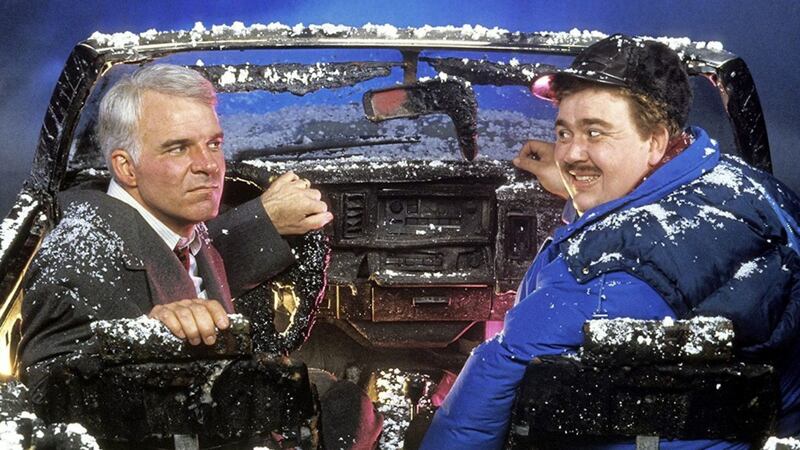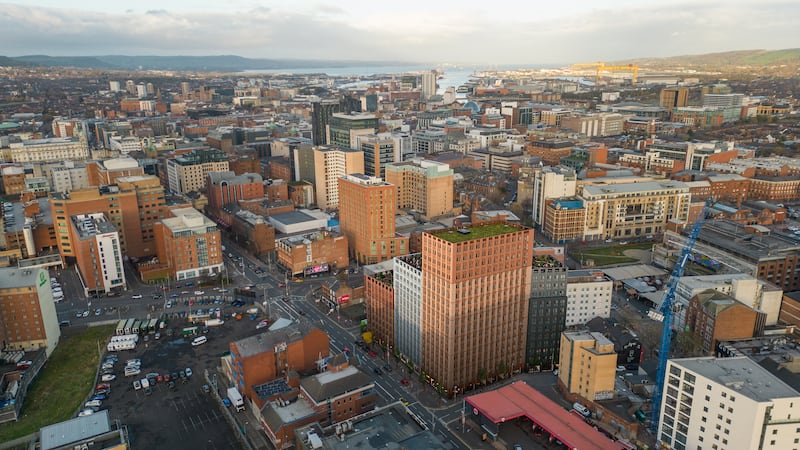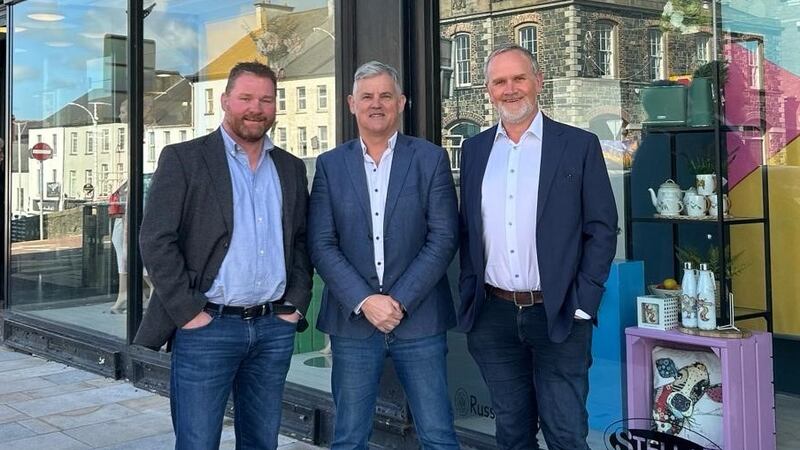WHEN you walk around the city, there are many very visible things that can give you a clear indication of how the economy is performing.
The number of cranes in the skyline is perhaps one of the most obvious ‘finger in the air’ indicators; but other visual evidence includes the number of vacant shop units, the instances of sale signs in shop windows, and the number and types of new cars on the roads.
But less obvious things are perhaps as important in understanding the economy, such as what the cranes are actually building, or things under the surface, such as the state of our infrastructure.
Deloitte’s Crane Surveys have added some scientific rigour to this visual barometer. According to Deloitte, Belfast’s crane count hit a record 35 last year, five more than 2016 and 2017.
This is impressive stuff, until you look south. In 2016, Dublin and Belfast had broadly the same number of cranes. In 2018, Dublin had three times as many (and 14 times the amount of office space is under construction). That gives us some perspective on the scale of the construction activity in Belfast, but just as interesting is the type of activity taking place.
2018 was the year of the hotel with 10 completed. This clearly results from the buoyancy of the tourism sector, with Belfast having had a series of record highs in visitor numbers over recent years. The phrase ‘build it and they will come is well-known’, but in Belfast’s hospitality sector it has perhaps been a case of ‘build it as they are already here’.
Looking at 2019, the crane numbers may remain similar to the last few years, but what they are building is likely to change again. Construction activity this year will likely be dominated by office development with 400,000 sq ft under construction in Belfast. And this change is not just confined to ‘new builds’, it includes changing the use of existing buildings, with the Movie House cinema site on the Dublin Road set to become Kainos’s new headquarters.
Over the longer-term, one of the major changes has been the shift away from cranes building retail space. Over 10 years ago, we had the likes of Victoria Square being constructed. Today, the prospect of another retail development of the same scale happening seem remote.
Indeed, we have even seen ‘change of use’, so to speak, before developments even break ground. The much-discussed Tribeca development in Belfast was envisaged very much as a retail-led scheme. But it is now much more focused on other uses. With the growth of online retail, this trend away from retail will only continue.
We can see this shift also reflected in the latest RICS and Ulster Bank Commercial Market Survey, with demand for retail space falling rapidly and demand for industrial space rising quickly. This is linked to the declining need for bricks and mortar retail space on the high street but the increased need for logistics-focused industrial space outside of city centres due to online retailing. Currently one-third of clothing sales are online; but this is expected to rise to half within five years.
Belfast City Council has a stated aim of attracting 70,000 more people to live in the city by 2035. This is critical to the future vibrancy of the city centre of Belfast. But it is also critical to the rates base. Whilst we are losing retailers, we are also losing an important contribution to the rates base. Attracting more people to live in the city will help replace this lost revenue.
Different cities are booming in different ways. In Belfast, we’ve seen strong leisure development in recent years. In Dublin, we are currently seeing a boom in office development, driven by tech sector growth with the likes of Facebook and Salesforce growing their presence. Indeed, Dublin is currently building 5.6m sq ft of office accommodation, which is more than Manchester, Leeds, and Belfast put together. In Manchester, the current boom relates to the record-breaking residential development.
The next three years are expected to see more residential units delivered than in the previous decade combined. Manchester is one of Europe’s fastest growing cities. The fact that Manchester is seeking to increase the number of people living in the city centre from 14,000 in 2002 to over 100,000 shows the extent of the change taking place and the efforts being made to turn it into a vibrant city in which to work, live and play. We are likely to see Belfast following this same journey.
But whilst the crane count tells us the positive story of the construction sector in both Belfast and Dublin, it doesn’t give us an insight into some of the challenges, including the issues both cities have with infrastructure.
The ‘broken sewerage pipe count’ doesn’t have the same ring to it. In Dublin for instance, a meaningful pick-up in residential development has been conspicuous by its absence as the housing affordability crisis has continued to mount. It has been reported that Dublin’s water engineers have to cross their fingers each day, hoping that supply will meet demand. This highlights the urgent need for increased capacity in Dublin’s water system. And the situation in Belfast is perhaps not radically better.
The NI Construction Employers Federation said in recent weeks that around 80 wastewater treatment works here are at or near full capacity. Under investment in this area has the potential to come back to bite us and investment into the future is needed.
We also need to see investment in other areas of our infrastructure as well, particularly when it comes to transport. Belfast is one of the most congested cities in the UK and we all dread the evening traffic report telling us that there is a broken-down car on the Westlink as commuters know this signals a cardiac arrest for the cities roads system. It was reported recently that the average commuter in Belfast spends over a week per year stuck in traffic.
Like with our water infrastructure, we need to see investment in our transport infrastructure, for instance, the York Street Interchange and the proposed new transport hub. We need to have a resilient transport system, not one where commuters continually fear getting stuck for long periods. But all of this necessary investment is being held up by the lack of decision-making in government.
So, in the years ahead, to ensure Belfast continues to move forward and become more vibrant, we need to see more cranes, but we also need to see an increasing focus on investing in our drains and our transport lanes.
Richard Ramsey is the chief economist at Ulster Bank.
Next week: Paul McErlean



